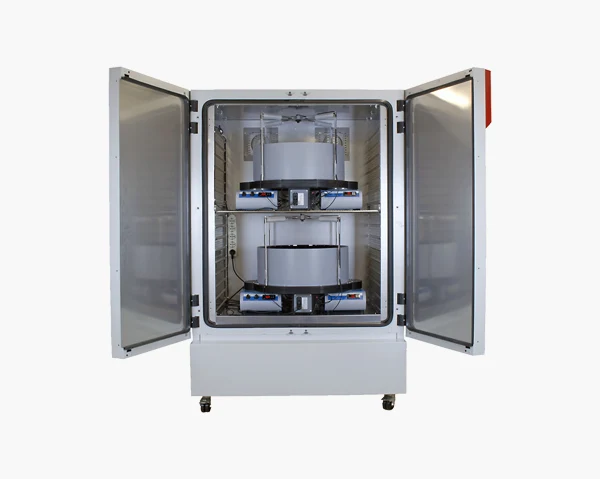World Parkinson's Day: an opportunity to shed light on advancements in scientific research

As the world marks April 11th as World Parkinson's Day, it is an opportune moment to reflect on the strides made in understanding and treating this complex neurodegenerative disorder. Parkinson's disease is the second most common neurodegenerative disease after Alzheimer’s disease. It affects millions worldwide, profoundly impacting individuals' lives with high rates of disability, thus implying the need for care and presenting significant challenges to healthcare systems globally. However, amidst these challenges, ongoing scientific research and innovative technologies offer hope for improved outcomes and eventual cures.
Parkinson’s disease is a chronic degenerative disorder of the central nervous system that affects both the motor and non-motor systems, causing problems with movement, mental health, sleep, pain and other health issues. It is characterized by the progressive degeneration of dopaminergic neurons in the substantia nigra region of the brain. Dopamine, a neurotransmitter critical for coordinating movement, becomes deficient as these neurons deteriorate, leading to the hallmark motor symptoms of Parkinson's disease, including tremors, rigidity, bradykinesia, and postural instability.
The impact of Parkinson's disease extends beyond its physical manifestations, profoundly affecting patients' quality of life, independence, and emotional well-being. Routine tasks become challenging, leading to decreased mobility, social isolation, and increased reliance on caregivers. Furthermore, the progressive nature of Parkinson's disease means that symptoms worsen over time, necessitating constant adjustments to treatment regimens and lifestyle modifications. The burden of Parkinson's disease is not only borne by patients but also by their families and caregivers, who face significant emotional, physical, and financial challenges in providing care and support.
The multifaceted challenge of Parkinson’s disease
While the exact cause remains a puzzle, ongoing research into genetics and environmental factors sheds light on potential culprits. Understanding these complexities is crucial for developing future treatments and improving the lives of those living with Parkinson's disease.
Parkinson's rarely runs directly in families, but a handful of cases suggest a genetic link. Faulty genes passed down through generations seem to be at play in some families, though the chance of inheriting this susceptibility is very low. Scientists are actively investigating specific genes to understand how they influence risk, onset, and progression. Unraveling this genetic code could pave the way for future treatments.
Environmental factors are also suspected culprits in the death of dopamine-producing neurons. Toxins, viruses, bacteria, and even heavy metals might be involved. The spotlight has been particularly intense on herbicides and pesticides, although the link remains speculative.
One tragic event, however, provided a crucial leap forward. In 1982, seven young adults developed severe and irreversible parkinsonism shortly after they injected themselves with a new synthetic heroin (Nonnekes et al., 2018, MPTP-induced parkinsonism: an historical case series, The Lancet Neurology). The discovery of MPTP-induced parkinsonism was the basis of a paradigm shift in Parkinson's disease research, which started with careful clinical observation of the seven index cases.
Still, the most prominent risk factor is age, with most cases diagnosed after 60. However, a significant portion (12-15%) are diagnosed before 45, categorized as Young-Onset Parkinson's Disease (YOPD).
Understanding Parkinson's Disease through preclinical research
Despite decades of research, Parkinson's disease remains incurable, highlighting the need for continued scientific exploration and innovative treatment strategies. Researchers are actively investigating various aspects of Parkinson's disease pathophysiology, including genetic predispositions, environmental factors, protein misfolding and neuroinflammation.
Understanding of Parkinson's has grown significantly over the past decades, but much work remains to be done in the quest to translate understanding of basic Parkinson's biology into new therapies.
In the field of neuroscientific preclinical research many devices help evaluate these motor symptoms, focusing on aspects such as movement coordination and limb function.
Motor Coordination, Activity, Force and Balance are mainly assessed with:
-
RotaRod test: is a crucial tool in preclinical research to assess motor coordination, balance, and motor learning in rodents and provides valuable insights into the motor deficits associated with Parkinson's disease and the efficacy of potential treatments. The rotarod test allows researchers to quantify motor deficits by measuring the time the mouse can remain on the rotating rod before falling off.
-
Grip Strenght Meter or Inverted Greed measures grasping force and hence skeletal muscle performance. These tests are used in many investigations associated with neuromuscular diseases to understand and demonstrate the motor impairments.
-
Climbing Test: climbing behavior reflects the rodents’ muscular and skeletal capabilities. It involves coordination, strength, and agility. Understanding their climbing abilities can provide insights into their neuromuscular systems, balance, and sensory perception.
-
Open field test: provides insights into spontaneous locomotor activity and exploratory behavior, offering a comprehensive understanding of motor impairments.
-
Pole test: evaluates bradykinesia and muscle rigidity by recording the time taken by mice to turn downward on a vertical pole. Assess the ability of a mouse to grasp and maneuver on a pole in order to descend to its home cage.
-
Balance Beam Test: this task is particularly useful for detecting subtle deficits in motor skills and balance that may not be detected by other motor tests. Assess fine motor coordination and balance can be assessed by the beam walking assay. The goal of this test is for the mouse to stay upright and walk across an elevated narrow beam to a safe platform.
-
Gait Analysis: in mouse models of Parkinson's disease gait analysis serves as a crucial tool for understanding motor impairments and evaluating therapeutic interventions. One commonly used method for gait analysis in mice is the footprint test. Mice walk along a narrow corridor, leaving footprints on a paper strip. Parameters like stride length, width, and duration provide insights into motor coordination and balance. Rodent models also utilize advanced techniques like video-based motion tracking systems. High-speed cameras capture detailed movements, enabling precise quantification of gait parameters. This approach offers more nuanced insights into motor dysfunction, such as alterations in paw placement and inter-limb coordination.
However, Parkinson's disease extends beyond motor deficits, encompassing a wide array of non-motor symptoms such as anxiety, depression, and cognitive impairments. Elevated plus maze and forced swim tests are employed to gauge anxiety-like behavior and despair-related responses, respectively. Furthermore, cognitive deficits, a significant aspect of Parkinson's disease, are assessed through cognitive tasks like the Morris water maze and novel object recognition test. The former evaluates spatial learning and memory, while the latter scrutinizes recognition memory and cognitive flexibility.
Ugo Basile’s Contributions to Parkinson's Research
In the realm of scientific research on Parkinson's disease, Ugo Basile Srl stands out as a company providing cutting-edge devices for motor coordination and function assessment. Leveraging decades of expertise in designing and manufacturing precision instrumentation for neuroscience research, Ugo Basile Srl offers a wide range of tools tailored to the specific needs of Parkinson's researchers.
RotaRod for Parkinson’s Disease
The Ugo Basile’s RotaRod is the 1st and original, invented after the Dunham and Miya method (1957) and today has more than 6,200 citations in the literature. Ugo Basile's RotaRod is a pivotal instrument in scientific research on Parkinson's disease, enabling researchers to assess motor coordination and balance in experimental models. In the study titled "Prosaposin maintains lipid homeostasis in dopamine neurons and counteracts experimental parkinsonism in rodents" the RotaRod played a crucial role in evaluating the therapeutic potential of prosaposin in Parkinson's disease.
Parkinson's disease is characterized by the progressive degeneration of dopaminergic neurons in the brain, leading to motor impairments such as tremors, rigidity, and bradykinesia. Prosaposin, a neurotrophic factor, has shown promise in protecting dopaminergic neurons and alleviating Parkinson's symptoms. To investigate its therapeutic efficacy, researchers utilized the RotaRod to assess motor function in experimental models of the disease.
The RotaRod consists of a rotating rod onto which animals are placed, and their ability to maintain balance and coordination as the rod accelerates is measured. In the study, rodents were subjected to experimental parkinsonism through neurotoxin-induced lesions mimicking the pathology of Parkinson's disease. Subsequently, they were treated with prosaposin to evaluate its effects on motor function.
Through RotaRod testing, researchers observed improvements in motor coordination and balance in rodents treated with prosaposin compared to untreated counterparts. These findings suggested that prosaposin administration mitigated the motor deficits associated with experimental parkinsonism, highlighting its potential as a therapeutic intervention for Parkinson's disease.
Furthermore, the RotaRod allowed for the precise quantification of motor performance, enabling researchers to analyze the therapeutic effects of prosaposin in a quantitative manner. By measuring parameters such as latency to fall and rotational speed, researchers could objectively assess the impact of prosaposin on motor function, providing valuable insights into its mechanisms of action.
Overall, the utilization of Ugo Basile's RotaRod in the study elucidated the therapeutic potential of prosaposin in Parkinson's disease by enabling researchers to evaluate its effects on motor coordination and balance in experimental models. This exemplifies the critical role of the RotaRod in advancing our understanding of Parkinson's disease pathophysiology and facilitating the development of novel therapeutic strategies to combat this debilitating condition.
Discover more about Ugo Basile’s RotaRod: https://ugobasile.com/products/categories/motory-coordination/rotarod-for-mice-and-rats
Read the complete open access research "Prosaposin maintains lipid homeostasis in dopamine neurons and counteracts experimental parkinsonism in rodents”
Grip Strength meter for Parkinson’s Disease
In the context of Parkinson's disease, where motor impairment is a defining characteristic, assessing grip strength provides valuable insights into disease progression and potential therapeutic interventions. The Grip Strength Meter manufactured by Ugo Basile is an essential tool, as it allows researchers to measure the motor function and muscular strength of experimental subjects.
Ugo Basile Grip Strenght Meter played a crucial role in the study “Rabphilin-3A as a novel target to reverse α-synuclein-induced synaptic loss in Parkinson's disease”, that delves into the intricate mechanisms underlying Parkinson's pathology, focusing on α-synuclein-induced synaptic loss, a hallmark of the disease.
Researchers utilized the Grip Strength Meter to evaluate the efficacy of targeting Rabphilin-3A as a therapeutic strategy to mitigate α-synuclein-induced synaptic loss. By employing animal models exhibiting Parkinson's-like symptoms, such as motor deficits and synaptic dysfunction, researchers could assess the impact of Rabphilin-3A modulation on grip strength, a surrogate measure of motor function.
The experimental protocol involved administering interventions targeting Rabphilin-3A and subsequently measuring grip strength using the Grip Strength Meter at specified time points. This enabled researchers to monitor changes in motor function over the course of the study and ascertain the effectiveness of the therapeutic approach in mitigating α-synuclein-induced synaptic loss.
The Grip Strength Meter provided quantitative data that complemented other assays and behavioral assessments, offering a comprehensive understanding of the therapeutic effects on motor function. By correlating grip strength measurements with synaptic integrity and α-synuclein pathology, researchers could elucidate the mechanistic basis of Rabphilin-3A modulation in mitigating Parkinson's-related motor deficits.
Overall, the Grip Strength Meter manufactured by Ugo Basile serves as an indispensable tool in Parkinson's disease research, facilitating the evaluation of motor function and the efficacy of potential therapeutic interventions. In the context of the study its utilization provided crucial insights into the therapeutic potential of targeting Rabphilin-3A in restoring motor function and synaptic integrity in Parkinson's disease.
Discover more about Ugo Basile’s Grip Strength Meter: https://ugobasile.com/products/categories/motory-coordination/grip-strength-meter-gsm-for-mice-and-rats
Read the complete open access research “Rabphilin-3A as a novel target to reverse α-synuclein-induced synaptic loss in Parkinson's disease”
Climbing Test: a new device to asses motor function in Parkinson’s disease animal model
Ugo Basile recently developed the Climbing Test a simple and automated tool to measure vertical climbing movements within a grid cylinder. Climbing behavior reflects the rodents’ muscular and skeletal capabilities. It involves coordination, strength, and agility. Understanding their climbing abilities can provide insights into their neuromuscular systems, balance, and sensory perception.
The device, developed in collaboration with the laboratory of Prof. Sidney Negus from Virginia Commonwealth University, provides a measurement of the vertical movement of rodents, a parameter which has not been widely investigated so far, in spite of the fact that rodents are animals that live in a 3D space and hence the analysis of XY position only is a limitation in many current studies.
However, climbing behavior and vertical movements have been previously studied in non-automated experiments to investigate Parkinson’s (Sundstrom et al., 1990).
The Ugo Basile Climbing System aims to provide a simple and automated tool to measure vertical climbing movements within a grid cylinder to inform all the scientists that are interested in this crucial parameter for their research.
Discover more about Ugo Basile’s Climbing Test: https://ugobasile.com/products/categories/pain-and-inflammation/climbing-test-for-vertical-movement-measurement-in-rodents
Conclusion
As we commemorate World Parkinson's Day, it is crucial to recognize the significant strides made in Parkinson's research and the indispensable role played by companies like Ugo Basile Srl in advancing scientific knowledge and improving patient outcomes. By combining cutting-edge technology, interdisciplinary collaboration, and unwavering dedication, we can continue to unravel the complexities of Parkinson's disease and pave the way for a future free from its devastating effects.
References
Nonnekes et al., 2018, MPTP-induced parkinsonism: an historical case series, The Lancet Neurology
For more information on Parkinson’s Disease
https://www.parkinsons.org.uk/





